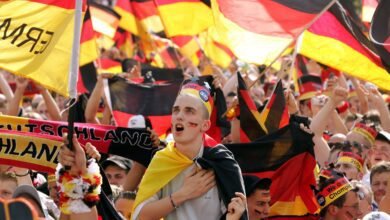How these Volusia beaches became the ‘birthplace of speed,’ ‘the most famous beach in the world’

VOLUSIA COUNTY, FL. – In the early 20th century, Central Florida played an important role in the early days of auto racing, setting a series of land speed records that would give rise to the “World Racing Center.”
According to Ormond Beach’s official website, the city became a proving ground for automobile inventors and drivers in the early 20th century. The compact sand along the beach gave the city the title “Cradle of Speed”.
Motorcycle and automobile racers brought vehicles that used gasoline, steam, and electric engines from France, Germany, and England, as well as from across the US. The records set at Ormond Beach during speed trials tournaments over the next eight years would be the first significant marks recorded outside of Europe.
The Ormond Garage was built in 1904 by Henry Flagler, owner of the iconic Ormond Hotel, but sadly no longer exists. The garage caught fire and burned to the ground in 1976 and the historic hotel, opened in 1888, was demolished in 1992 after several failed attempts to restore it.
The Ormond Garage was used to accommodate racing cars during beach races and would house the drivers and mechanics during speed time trials. Owners and manufacturers stayed at Flagler’s nearby Ormond Hotel, which dominated the waterfront skyline for years.
Racing in Ormond Beach began in 1902, according to the city, and American speed records were set the following year. In 1904, world records were set during the 1904 speed tournaments, including one for motorcycles that lasted seven years.
In 1906, the “Stanley Rocket” – a steam car described as the “most aerodynamic racer of the day” – was taken to Ormond Beach to take part in an annual speed contest. On January 26, the vehicle set what became Ormond Beach’s most famous land speed record, reaching a speed of 127.659 mph.
Much of motorsports moved to Indianapolis in 1911, but it wasn’t long before Bill France and friends began racing on the beach, starting what later became NASCAR – which takes us a little north to Daytona. Beach.
According to the official Volusia County website, in 1920, Tommy Milton first broke the 150 mph record in the “Duesenberg Special,” shown below.
Just two years later, Sig Haughdahl reached a speed of 180 mph in his “Wisconsin Special” car, which had an 836 cubic inch, 6-cylinder airplane engine capable of producing 250 horsepower.
These records were attempted on the “Measured Mile,” which was an eleven-mile stretch that began north of the Main Street pier and ended near Ponce Inlet.
In 1927, Major HOD Segrave arrived to chase the 200mph barrier and, in the process, thrust the area into the international spotlight.
Previous speed records were sanctioned by the Automobile Association of America (AAA), but were not certified worldwide because they were not monitored by the Federation Internationale de L’Automobile in Paris, which was the recognized government authority.
Segrave petitioned the FIA to certify AAA as the official governing body for Daytona beach timed events and the rest is, well, history.
He also made history of his own by becoming the first driver in America to wear a safety helmet, according to the Volusia County government.
Later, on March 29, 1927, Segrave drove the Sunbeam Mystery “S” at a speed of 203.79 mph.
It was during this period that Daytona Beach was dubbed “The Most Famous Beach in the World” by Jerome A. Burgman, a city leader.
Then Sir Malcolm Campbell, a former military man and insurance writer for Lloyd’s of London, brought five “Bluebirds” to Daytona Beach from 1928 to 1935, seeking to break the 300 mph barrier.
In 1935, Campbell averaged a time of 276.82 mph. Drivers had to make two trips – one north and one south to eliminate any wind advantage. The speed record is the average of these two races.
A year later, Campbell broke the 300 mph barrier at Bonneville Salt Flats, Utah.
During Campbell’s record attempt at Daytona Beach, William Henry Getty France, or Bill France Sr., watched from the shore.
France is also known as the founding father of NASCAR.
In the late 1940s, France and others decided that motorsport needed its own sanctioning body. In 1947, in France, Bill Tuthill and 18 “racers” met at the Streamline Hotel in Daytona Beach and formed the National Association of Stock Car Auto Racing, or NASCAR.
The men promoted races throughout the South, but the main event was in Daytona Beach. France debuted the new beach track at Ponce Inlet in 1948, which featured a course for cars and another for motorcycles.
The 4.1-mile beach road route would travel north on the hard sand of the beach before turning left at the north curve of sloping sand. Vehicles would then travel south on two-lane paved Avenida Atlântica until they reached the start/finish line at the sloping sand south curve, which would loop around.
NASCAR sanctioned automobile races on the beach from 1948 to 1958. Sanctioned motorcycle races were held on the course from 1948 to 1960.
Realizing that a growing population and large crowds would become a problem for beach racing, France Sr. proposed building a permanent speedway in 1953.
In 1954, France signed a contract with officials from the city of Daytona Beach and Volusia County to build what would become the Daytona International Speedway.
Daytona International Speedway, a 2.5-mile track, opened in 1959. The first Daytona 500 took place on February 22 before a crowd of more than 41,000 people.
You can listen to all episodes of Fourth State of Florida in the media player below:
Copyright 2024 by WKMG ClickOrlando – All rights reserved.




